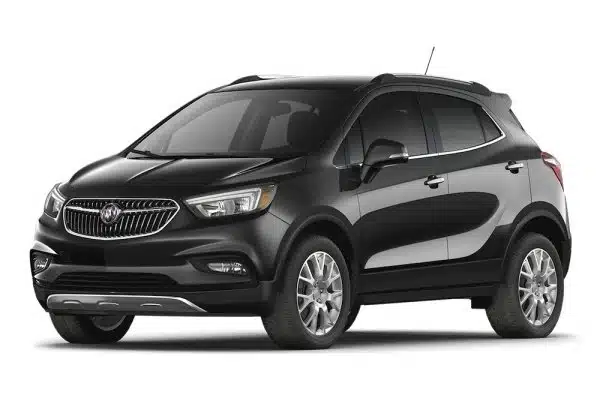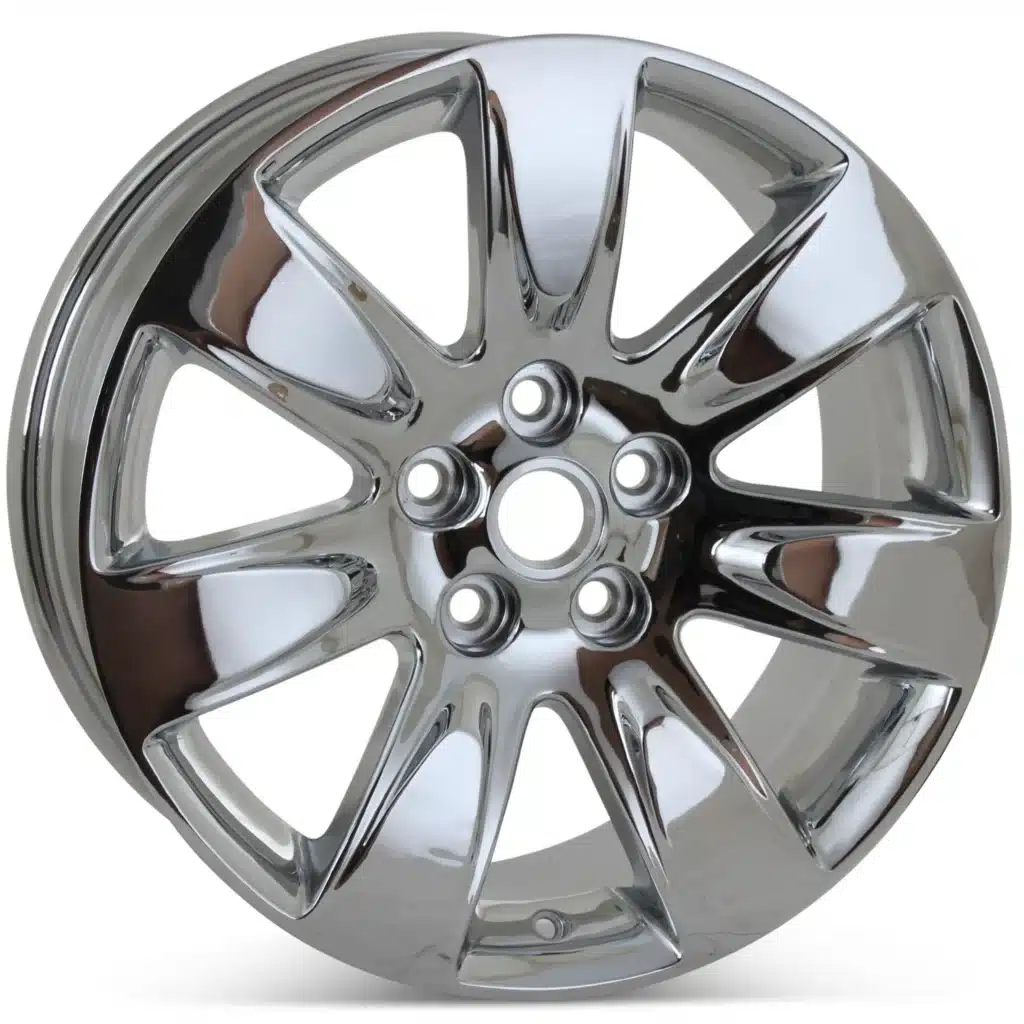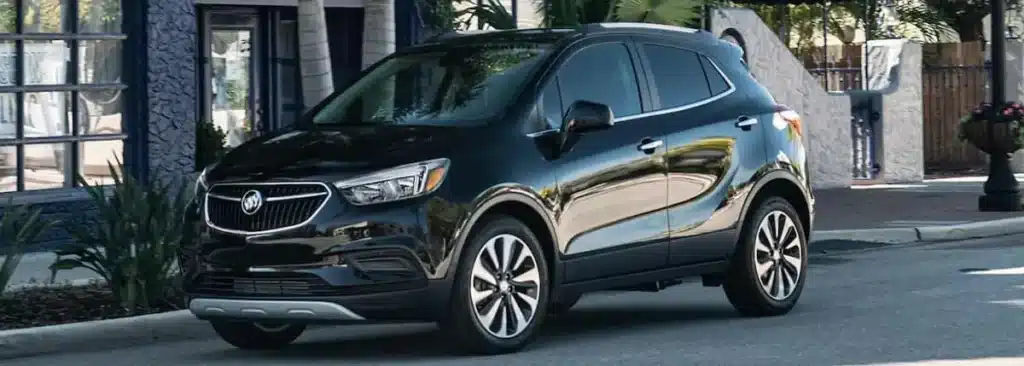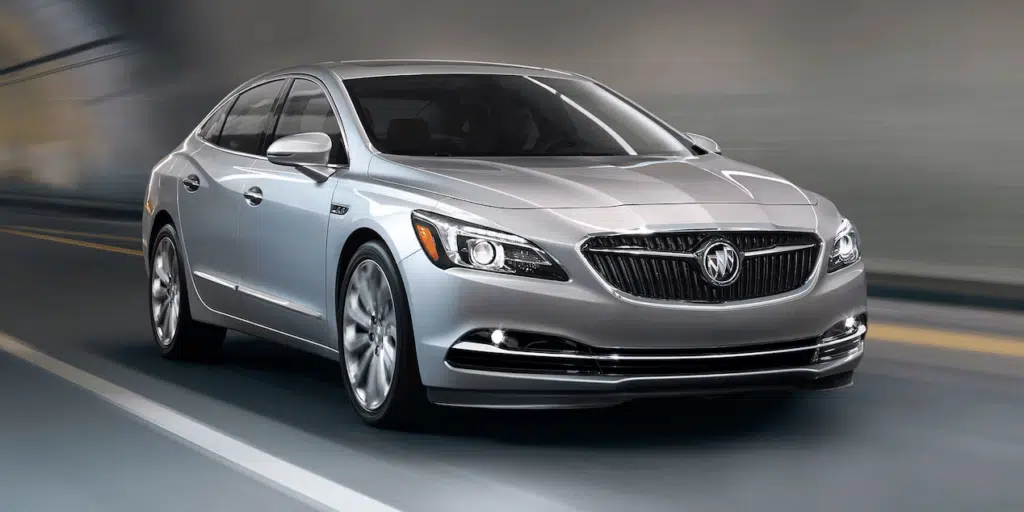Selecting the right wheels for your Buick requires understanding bolt patterns – one of the most important measurements for wheel fitment.
Buick uses several bolt pattern configurations across its lineup, primarily featuring 5-lug and 6-lug designs. This specification tells you how many bolts hold your wheel and how they’re arranged.
Recent Buick models mainly use the 5x115mm or 5x120mm patterns, but older vehicles might have different setups.
This guide breaks down Buick’s bolt pattern specifications by model and year, helping you make the right choice for your vehicle.
Let’s explore the exact measurements necessary to ensure perfect wheel fitment for your Buick model.
What is the Bolt Pattern for a Buick

Most Buick vehicles use either 5-lug or 6-lug bolt patterns, but the exact measurements vary across different models and years.
Here’s what you need to know:
Common 5-Lug Patterns
- 5x115mm: Used on many modern Buicks like the LaCrosse (2005-2012) and older Lucerne models
- 5x120mm: Found on newer models like the 2020-2024 Envision
- 5x100mm: Used on some older models like the 1986-1989 Skyhawk
- 5x127mm (5×5″): Seen on specific models like the Roadmaster
Common 6-Lug Patterns
- 6x132mm: Used on certain Enclave models (2008-2014)
- 6x115mm: Found on some Terraza models
- 6x127mm (6×5″): Used on Rainier models
Remember that bolt patterns can change even within the same model line.
For example, the Buick Envision switched from 5x115mm to 5x120mm during its production run. This is why checking your specific model year is crucial when shopping for new wheels.
Quick Tip: Always verify your exact model year and trim level when checking bolt patterns. What fits a 2010 model might not work on a 2012 of the same vehicle.
Understanding Buick Bolt Patterns and Their Compatibility

Bolt patterns, also known as bolt circles or pitch circle diameter (PCD), determine whether wheels will fit your Buick.
This measurement consists of two numbers: the number of lug holes and the diameter of the circle they form.
Common Buick Bolt Pattern Configurations
1. Main 5-Lug Patterns
5x115mm Configuration
- Most popular on Buicks between 1990-2012
Found on models like:
- LeSabre (1990-2005)
- LaCrosse (2005-2012)
- Lucerne (2006-2011)
5x120mm Configuration
Used on newer models (2018-present)
- Envision (2018-2024)
- Recent Regal models
- Modern Enclave versions
- 5x100mm Configuration
Used on Older Compact Models
- Skyhawk (1986-1989)
- Early Skylark models
- Century (1986-1989)
Main 6-Lug Patterns
6x132mm Pattern
Used primarily on larger SUVs
- Enclave (2008-2014)
- Some crossover models
6x127mm Pattern
Found on truck-based SUVs
- Rainier (2003-2007)
- Some specialty models
Pattern Changes Within Model Lines
Some Buick models have changed patterns over their production runs:
Envision
- 2014-2018: 5x115mm
- 2018-present: 5x120mm
Enclave
- Pre-2018: 6x132mm
- 2018-present: 5x120mm
Cross-Compatibility
Understanding which patterns work together:
Direct Fits
- 5x115mm wheels fit most 1990-2012 Buicks
- 5x120mm wheels work on most current models
Non-Compatible Combinations
- 5x115mm won’t fit 5x120mm hubs
- 6-lug wheels never fit 5-lug hubs
Checking Your Pattern
To verify your Buick’s bolt pattern:
- Count the lug nuts
- Measure between lugs (center to center)
- Check your specific model year in the manual
Tips for Wheel Shopping
1. Always Verify
- Model year
- Exact trim level
- Current bolt pattern
2. Consider
- Wheel offset
- Center bore size
- Hub-centric rings, if needed
When in doubt, consult a wheel specialist or your Buick dealer to ensure proper fitment for your specific model.
List of the Correct Bolt Pattern for a Different Buick
| Category | Model | Years | Bolt Pattern | Factory Wheel Sizes |
|---|---|---|---|---|
| Modern Models | Envision | 2020-2024 | 5x120mm | 18″ to 20″ |
| Encore | 2020-2024 | 5x105mm | 17″ to 18″ | |
| Enclave | 2020-2024 | 5x120mm | 18″ to 20″ | |
| Encore GX | 2020-2024 | 5x105mm | 17″ to 19″ | |
| Recent Models | LaCrosse | 2017-2019 | 5x120mm | – |
| 2010-2016 | 5x115mm | – | ||
| Regal | 2018-2020 | 5x120mm | – | |
| 2011-2017 | 5x115mm | – | ||
| Verano | 2012-2017 | 5x115mm | – | |
| Discontinued | Century | 1997-2005 | 5x115mm | – |
| 1986-1996 | 5x100mm | – | ||
| LeSabre | 2000-2005 | 5x115mm | – | |
| Park Avenue | 1997-2005 | 5x115mm | – | |
| Lucerne | 2006-2011 | 5x115mm | – | |
| SUV/Crossover | Rainier | 2004-2007 | 6x127mm | – |
| Rendezvous | 2002-2007 | 5x115mm | – | |
| Terraza | 2005-2007 | 6x115mm | – |
Key Notes
- Always verify your specific model year.
- Factory wheel size options may vary by trim level.
- Some models underwent bolt pattern changes mid-generation.
- Consider offset and center bore measurements for proper fitment.
How to Identify the Correct Bolt Pattern for a Specific Buick Model

Finding the right bolt pattern doesn’t have to be complicated. Here’s a simple guide to confidently identifying your Buick’s bolt pattern.
Method 1: Manual Measurement
Count the Lug Holes
- Look at your wheel
- Count the number of lug nuts (most Buicks have 5 or 6)
Measure the Pattern for 5-Lug Wheels
- Measure from the center of any lug to the center of the second lug (skipping one)
- Multiply this measurement by 1.701 for the true bolt circle
For 6-lug wheels
- Measure directly across from one lug to another
- This gives you the bolt circle diameter
Method 2: Use Your VIN
Locate Your VIN
- Found on driver’s side dashboard
- Check the driver’s door jamb
- Listed on vehicle registration
Look up Your Pattern
- Use your VIN at a Buick dealer
- Check online wheel fitment guides
- Contact customer service
Method 3: Quick Reference Check
Look for Identifying Marks
- Check your owner’s manual
- Look at the back of your current wheels
- Inspect any markings on the hub
Common Signs of Wrong Bolt Pattern
- Wheels won’t center properly
- Bolt holes don’t line up
- Uneven spacing between lugs and holes
- The wheel sits at an angle
Tips to Remember
- Never force a wheel to fit
- Double-check measurements twice
- Consider having a professional verify
- Keep records for future reference
Comparisons Between Buick’s & Other Brands’ Bolt Patterns with Prices
| Category | Details | Price Range |
|---|---|---|
| Bolt Pattern Matches | 5x115mm Pattern (Pre-2018 Buicks) | |
| Chevrolet | $120-200 per wheel | |
| Chrysler | $140-250 per wheel | |
| Dodge | $150-280 per wheel | |
| Pontiac | $100-180 per wheel | |
| 5x120mm Pattern (Modern Buicks) | ||
| BMW | $200-500 per wheel | |
| Chevrolet | $150-300 per wheel | |
| Cadillac | $180-400 per wheel | |
| GMC | $160-350 per wheel | |
| 6x132mm Pattern (Older Enclave) | ||
| GMC SUVs | $180-400 per wheel | |
| Chevrolet SUVs | $170-350 per wheel | |
| Cost Comparison by Type | OEM Wheels | |
| Buick Wheels | $250-500 each | |
| Other GM Brands | $200-450 each | |
| Cross-Compatible Brands | $300-600 each | |
| Aftermarket Options | ||
| Basic Steel | $80-150 each | |
| Alloy Entry Level | $120-200 each | |
| Premium Alloy | $200-400 each | |
| High-End Custom | $400-800+ each | |
| Money-Saving Tips | Cross-Brand Shopping | |
| Compatible GM brands, universal fits, sales | – | |
| Package Deals | ||
| Full sets, tire and wheel packages, promotions | – | |
| Price Factors | Material Quality | |
| Cast Aluminum | $120-250 | |
| Forged Aluminum | $300-1000+ | |
| Steel | $80-150 | |
| Size Impact | ||
| 16-inch | $100-200 | |
| 17-inch | $150-300 | |
| 18-inch | $200-400 | |
| 19-inch+ | $300-600+ | |
| Additional Costs | ||
| Installation | $15-40 per wheel | |
| Balancing | $10-15 per wheel | |
| TPMS Sensors | $50-100 each | |
| Lug Nuts | $20-50 per set | |
| Compatibility Notes | Direct Fits | |
| GM family vehicles, same-generation/platform | Cheapest option | |
| Universal Fits | ||
| Require hub-centric rings and adapters | $30-100 additional cost | |
| Market Price Trends | Entry Level | $400-600 per set |
| Mid-Range | $600-1200 per set | |
| Premium | $1200-2400 per set | |
| Ultra-Premium | $2400+ per set | |
| Value Tips | Best Value Options | |
| Last-generation OEM, quality aftermarket, certified pre-owned | – | |
| Long-term Savings | ||
| Quality materials, proper fitment, warranty | – |
How to Maintain Bold Patterns on Your Buick
1. Essential Maintenance Steps
Regular Inspection
- Check lug nuts monthly for tightness
- Look for rust or damage around bolt holes
- Watch for unusual wear patterns
- Inspect for loose or missing lug nuts
Proper Cleaning
Clean Bolt Areas
-
- Remove dirt and debris
- Use a brush for hard-to-reach spots
- Clean lug nut seats
- Remove rust buildup
Protection Steps
-
- Apply anti-seize compound (sparingly)
- Keep threads clean and dry
- Use proper torque specs
- Replace damaged lug nuts
2. Signs of Bolt Pattern Issues
Warning Signs
- Vibration while driving
- Uneven tire wear
- Loose-feeling wheels
- Clicking sounds when turning
- There is visible rust around the lug nuts
Prevention Tips
- Rotate tires every 5,000-7,000 miles
- Check torque after wheel service
- Keep lug nuts clean
- Use the correct installation sequence
Proper Torque Procedure
Basic Steps
-
- Clean threads thoroughly
- Hand-tighten all lug nuts
- Use a star pattern for tightening
- Follow torque specifications
Common Torque Values
-
- Most Buick cars: 100-110 ft-lbs
- Buick SUVs: 110-120 ft-lbs
- Always check your manual
3. Professional Service Schedule
- Inspect every oil change
- Full check during tire rotation
- Annual bolt pattern inspection
- Replace worn components promptly
Remember: Proper maintenance keeps your wheels secure and helps prevent costly repairs. When in doubt, consult your Buick service manual or professional mechanic.
Conclusion
Whether you’re replacing wheels, rotating tires, or just doing routine maintenance, understanding your specific bolt pattern is essential.
Remember to verify your exact model year and pattern before making any wheel purchases, and don’t skip regular maintenance checks of your lug nuts and bolt holes.
If you’re unsure about any measurements or maintenance steps, it’s always worth consulting with a professional mechanic or your local Buick dealer.
By following proper maintenance routines and using the right bolt pattern specifications, you’ll keep your Buick running smoothly and safely for years to come.
When in doubt, take the extra time to double-check – your safety is worth it.


